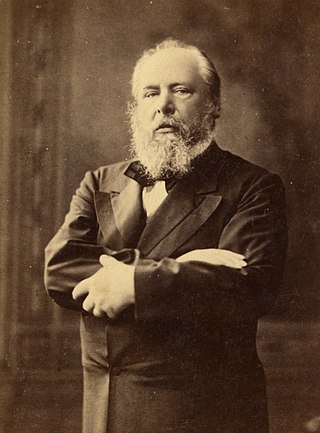
William III was King of the Netherlands and Grand Duke of Luxembourg from 1849 until his death in 1890. He was also the Duke of Limburg from 1849 until the abolition of the duchy in 1866.

Prince of Orange is a title associated with the sovereign Principality of Orange, in what is now southern France and subsequently held by the stadtholders of, and then the heirs apparent of, the Netherlands.

William I of Nassau-Siegen, nicknamed the Elder or the Rich, was Count of Nassau-Siegen and half of Diez from 1516 to 1559. He was a descendant of the Ottonian Line of the House of Nassau.

Henri W.PH.E. van den Bergh van Eysinga was Dutch religious socialist. He was born in The Hague and he died in Zutphen. He was revolutionary and a philosophical writer. In his book The soul of mankind he describes how children should be raised not to harm anyone and respect life.
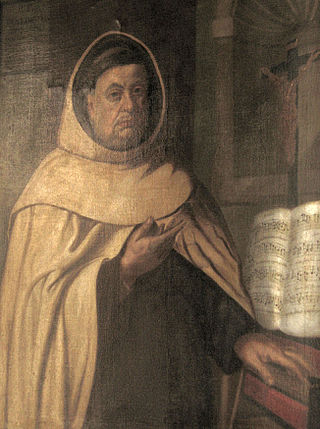
Benedictus Buns, Benedictus à sancto Josepho, was a Carmelite priest and composer.

Willem IV, Count van den Bergh (1537-1586) was the Dutch Stadtholder of Guelders and Zutphen from 1581 until his arrest for treason in 1583.
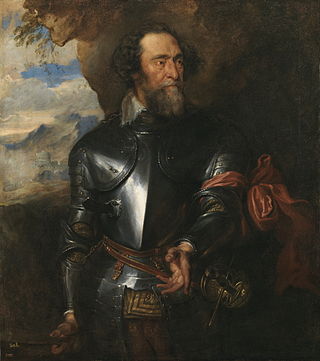
Hendrik van den Bergh, 1573 to 22 May 1638, was a Flemish noble and professional soldier. Hereditary lord of Stevensweert, from 1618 to 1637 he was also stadtholder of Upper Guelders, the only part of Guelders to remain loyal to Habsburg Spain during the Eighty Years War. Known as a brave and resourceful cavalry commander, he spent most of his career with the Spanish Army of Flanders and became its Maestre de campo in 1628. Accused of treachery after the loss of Den Bosch in 1629, he defected to the Dutch Republic following the 1632 Conspiracy of Nobles.
Maria Von Nassau-Dillenburg, Countess of Nassau, Katzenelnbogen, Vianden and Dietz, was a Dutch noblewoman.
Karl Friedrich was a member of the House of Hohenzollern and Prince of Hohenzollern-Sigmaringen, Lord of Haigerloch and Wehrstein from 1769 until his death.

The Grafelijke Korenmolen van Zeddam is a tower mill in Zeddam, the Netherlands, which has been restored to working order. The mill may have been built before 1441, making it the oldest windmill in existence in the Netherlands. It is listed as Rijksmonument number 9290.

Van Polanen was a noble family that played an important role in the Netherlands during the Middle Ages. The impact of the family transcended its dissolution in the 15th century as the House of Nassau gained the vast properties of the House of Polanen in 1403 through marriage. The titles such as baron of Breda and lord of Polanen remain amongst the titles of the monarch of the Netherlands until today.

Republicanism in the Netherlands is a movement that strives to abolish the Dutch monarchy and replace it with a republic. The popularity of the organised republican movement that seeks to abolish the monarchy in its entirety has been suggested to be a minority among the people of the Netherlands, according to opinion polls.
Anarchism in the Netherlands originated in the second half of the 19th century. Its roots lay in the radical and revolutionary ideologies of the labor movement, in anti-authoritarian socialism, the free thinkers and in numerous associations and organizations striving for a libertarian form of society. During the First World War, individuals and groups of syndicalists and anarchists of various currents worked together for conscientious objection and against government policies. The common resistance was directed against imperialism and militarism.
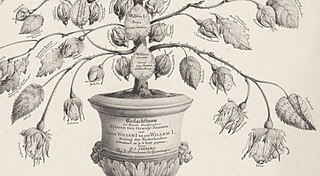
Countess Walburga of Egmont, Dutch: Walburga Gravin van Egmont, was a countess from the House of Egmond and through marriage Countess of Nassau-Siegen.
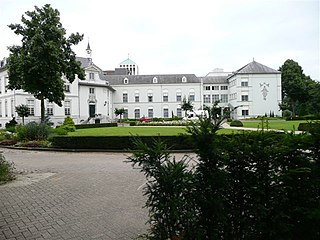
Boxmeer Castle is an originally 13th century castle in Boxmeer, North-Brabant, Netherlands. It is situated on a former island in the Meuse.

Polanen Castle was a castle located in today's Monster, South Holland in the Netherlands. The ancestral home of the Polanen family, it suffered a siege in 1351 and was demolished in 1394. It was replaced by a small manor somewhat to the south.

The Battle of Veere was a small naval battle that took place in late May 1351 during the Hook and Cod wars.

Maria Elisabeth Van den Bergh, Princess of Hohenzollern-Hechingen was a Dutch noblewoman by birth and member of the House of Hohenzollern by marriage.. She lived in the court of Elizabeth Stuart, Queen of Bohemia in the year of about 1628.
















